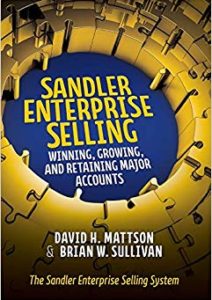Huddled in the safety of your basement with your family, you rode out the storm that raged above. The deafening noise that seemed to go on forever has now ceased and sunlight is seeping through the bulkhead doors covering your stairwell. As you rise to release the latch, you wonder. Will the cattle have escaped through broken fencing or even survived the winds? Will the chicken coop be shattered or for that matter, exist at all? What about the farm equipment and the house that sat above you in the midst of the bedlam? All questions to ponder as you rise and recover.
Many of us in sales feel the same way as we rise and recover from the tornado that was COVID. While we worked diligently to stay connected with our major accounts throughout the turmoil, change happened with them all. Your large transportation logistics client that generated 80% of their revenues from the airline industry saw its customers like Virgin Australia, Trans-State, Avianca and Compass simply disappear. Change happened, to varying degrees, with all your clients. And just as the farmer assesses damage, you must do the same with your major accounts to retain your precious assets. Client retention – now, more than ever.
We all know the statistics regarding major accounts. Most selling organizations generate 80% of their business from 20% of their clients. Winning a new account costs 20-25 times more than keeping a current one. Even a small increase in a selling organization’s major client retention percentage produces exponentially higher revenue and profit increases. But decreases in retention rates can spawn crippling negative impacts. And while COVID’s once-in-a-generation calamity is not due to you neglecting your customers, you must work to minimize the resulting operational trauma to our business. And you start by executing an account retention strategy with a practical framework to keep and expand your client accounts as you recover – together.
I built a retention framework as part of the Sandler Enterprise Selling Program that provides just the type of guide needed at this critical time. It’s based on the fundamental reasons why accounts choose to stay with you or part ways. Given the COVID-driven changes experienced by your major accounts, executing now on a retention roadmap is nothing less than a survival skill. And the most fundamental way to drive retention is by getting better at what you do. What you do regarding those “stay or go” reasons – the following 16 “Critical Retention Factors”:
- Your Delivery of Real Value
- Ease of Communication with the Account
- Your Buyer Network Coverage
- High-Level Executive Relationships
- Your Relevance in the Account – Going Deep and Wide
- The Variety of Products/Services you Deliver
- Your Wallet Share of Winnable Business
- The Duration of your Longest Current Contract
- Your Active Pipeline Opportunities with the Account
- Your Forecasted Account Revenue Growth
- The Profitability Levels in your Business with the Account
- Your Delivery Performance with the Account
- Your Account and Industry Understanding
- The Account’s Satisfaction Levels
- The Trust Levels in the Relationship
- The Account’s Dependence on You
Certainly, your account performance in many of these areas has changed significantly of late. And if you’re not focused on understanding and improving your performance in these areas, you are highly vulnerable. Not only is future retention threatened, but your very continuation is in jeopardy. Capable competitors are likely taking advantage of the disarray and building directed strategies to exploit your weaknesses and steal your key accounts. Don’t kid yourself. They knew who your major clients were before the pandemic and they know now. And they’re planning to steal them away from you.
So, how do you implement the process? Assemble your account teams, consisting of sales, delivery, and any other resources connected to specific clients. Collaboratively develop candid evaluations of your performance in each of the factors in light of the changes the account has experienced due to COVID. Don’t assume that you’re viewed now in the same way that you were in March of 2020. The world is different and so are your accounts.
But while there’s value in these candid evaluations, the magic is in forward motion. It’s all about identifying and executing on specific improvement actions in each critical retention factor. Get better at what you do, deliver more value and increase your chances of keeping your best clients.
Effectively employing a dynamic account retention process is more important now than ever. Your major accounts’ pains have grown dramatically since the pandemic hit. The amazing serendipity of it all is that working hard now at serving will open the door to selling. Maybe sooner rather than later. Because your clients will remember that you focused on helping them at a time when they needed it most.
And take into account a grammar lesson in all of this. It matters now, by the way, more than ever before. With your major accounts, retention is not a noun. It’s a verb. It’s not what you get. It’s what you do.













Comments